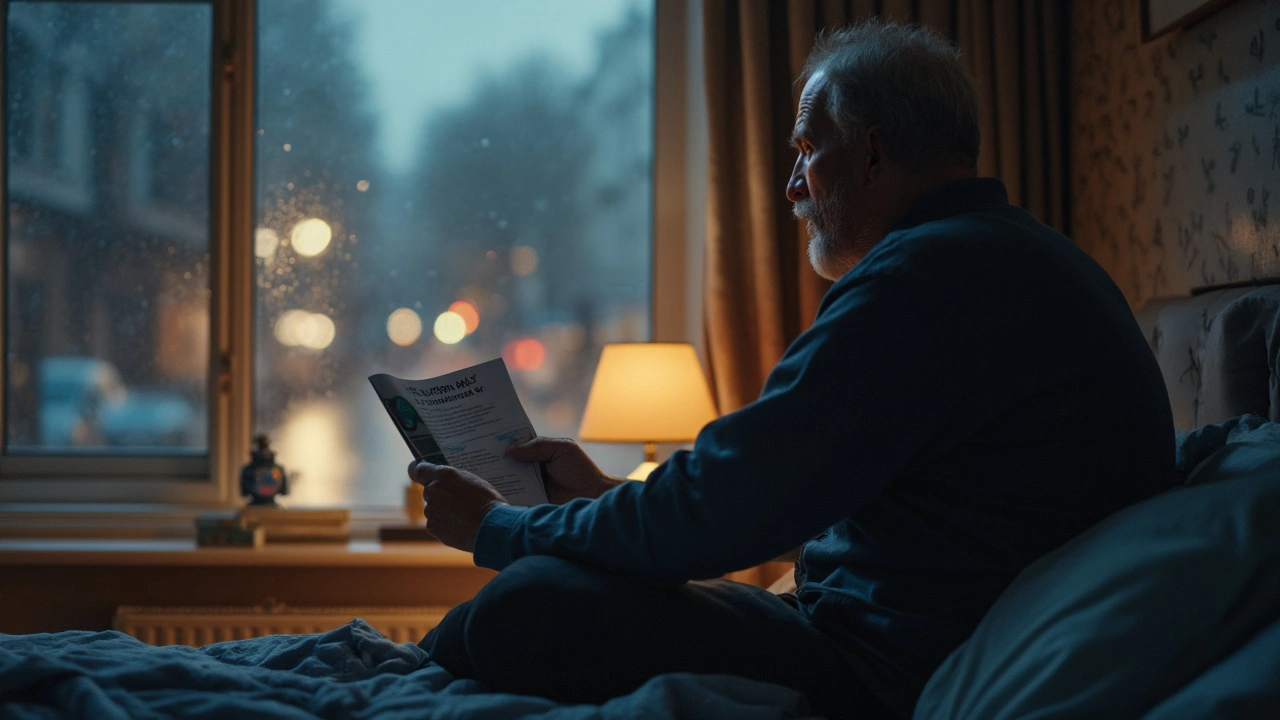BPH symptoms: how to spot an enlarged prostate
By age 60, about half of men show signs of benign prostatic hyperplasia (BPH). If you’ve noticed changes when you pee, don’t ignore them. Early recognition makes it easier to feel better and avoid complications.
Common BPH symptoms
Symptoms come from the prostate pressing on the urethra and bladder. You might notice a weak or slow stream, trouble starting urination (hesitancy), or feeling like you haven’t fully emptied your bladder. Needing to go more often, especially at night (nocturia), is typical.
Other red flags: sudden strong urges, leaking or dribbling after you finish, and straining to push urine out. Some men get blood in the urine or recurrent urinary infections. If you suddenly can’t pee at all, treat it as an emergency.
What to do next
Start by tracking symptoms for a week or two: how often you go, how much you pass, and any pain or blood. Bring that note to your doctor. They’ll ask questions, do a digital rectal exam (DRE) to feel prostate size, and order a urine test to rule out infection.
Common follow-up tests include a prostate-specific antigen (PSA) blood test, ultrasound to measure residual urine, and uroflowmetry to check urine speed. These tests help separate BPH from infections, stones, or other issues.
Treatments range from simple lifestyle fixes to medicines and procedures. For mild symptoms, drink less fluid before bed, cut down on caffeine and alcohol, and avoid medicines that tighten the prostate (ask your doctor about decongestants).
Medications include alpha-blockers (like tamsulosin) that relax the prostate and bladder neck, and 5-alpha-reductase inhibitors (like finasteride) that shrink the gland over months. Sometimes both are used together. Each drug has possible side effects—talk them over with your doctor.
If meds don’t help or symptoms are severe, minimally invasive procedures or surgery (for example TURP or newer outpatient options) can remove or reduce prostate tissue and restore flow. Your urologist will match the option to your health and goals.
Simple habits help day-to-day: double voiding (try to pee, wait a minute, then try again), schedule bathroom breaks, treat constipation, and do pelvic floor exercises. These steps can ease symptoms while you work with your doctor on longer-term care.
Don’t ignore worsening symptoms, fever, severe pain, or sudden inability to urinate. Those need prompt medical attention. If you’re unsure, call your clinic—early answers save time and stress.
Keep notes, ask about side effects, and get a clear plan from your provider. With the right approach, most men manage BPH well and keep a normal life.

